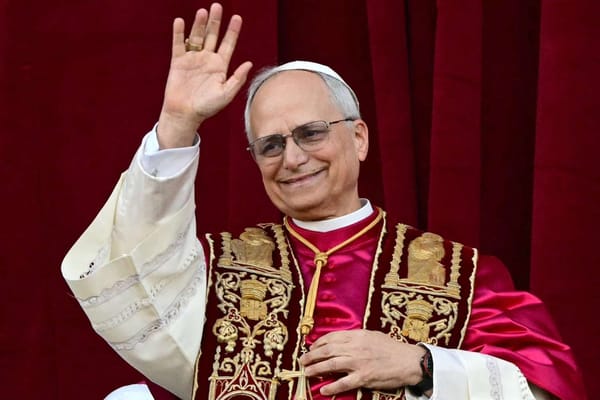Was Jesus the man on the Shroud of Turin?


In my article The Shroud of Turin: Authentic or Forgery? I provided evidence that led me, and more importantly, scientists, to conclude that the Shroud of Turin is not a forgery. The bloodstains and imprints on the cloth are from a man in 1st Century Judea who was tortured and crucified. But was this man Jesus Christ? I believe so. Here's why:
Blood Type: The blood type on the cloth is a rare AB positive (AB+), the same blood type found on the Sudarium of Oviedo and in all lab-tested Eucharistic miracles.
Crown of Thorns: The man shows injuries from a crown of thorns that covered his entire head, not just around it. This was a unique form of torture used to mock Jesus as the King of the Jews.
Nail Injuries: The man shows injuries from nails in both hands entering the palms and coming out through the wrists. Crucifixion victims in 1st Century Jerusalem had their arms tied to the crossbar or sometimes nailed. The Gospels describe Jesus’ hands nailed (the Greek word used stands for hands and wrists).
Shoulder Dislocation: The shoulder is dislocated, likely from the weight of the crossbar hitting him when he fell to his knees, as described in the Gospels.
Severe Scourging: The scourging in 1st century Judea was usually carried out by two soldiers who used a "flagrum." This was a short wooden handle to which were tied two or three leather thongs, to the ends of which were attached lead balls or small bones of sheep. Because of Jewish law, the victims were given less than 40 lashes, "40-1". Typical crucifixion victims were given moderate scourging so that they could have enough energy to carry the cross beam all the way up to Golgotha and be able to die on the cross. The man on the Shroud received a brutal scourging, far worse than typical crucifixion victims, with 60 to 120 lashes. This aligns with Pontius Pilate's desire to satisfy the Jewish leaders by ordering an especially harsh scourging for Jesus in the hopes that Jewish leaders would not demand capital punishment.
Pierced Side: The right side of the body was pierced between the 5th and 6th ribs by a lance-like weapon, with evidence of a water-like fluid mixing with the blood, likely from the pericardial fluid or from the pleural sac. In the first Century, Jerusalem crucifixion victims were left on the cross for up to 36 hours until they slowly died from affixation or circulatory failure. If they needed to accelerate their death, they would break their legs.
Roman Coins: Roman coins placed on the eyes of the image indicate that they were minted by Pontius Pilate in 29 A.D.
Sudarium of Oviedo: The Sudarium of Oviedo, revered as the face cloth of Jesus since 600 AD, shows similar pollen grains, contains AB+ blood type, and has 124 exact matches to the face wounds on the Shroud, suggesting they were both on the same man. You can read about it in my article: Did the Sudarium of Oviedo truly cover Jesus' face?
If this man was indeed Jesus Christ, he suffered a death more brutal and painful than anything we can imagine out of selfless love and total humility. While this may provide a new, somber mental image, the moment of his resurrection provides us with a new and glorious mental image.
So, what does the Shroud of Turin teach us about the resurrection? There are several enigmas regarding the image of the Shroud that can only be explained by the profound power of Jesus' resurrection:
The image is only on the uppermost surface of the fibers, ruling out chemical formation.
The image shows the whole body, but not all areas of the cloth came into contact with it.
Vapors from chemicals or the corpse itself did not create the image.
There is a double image on both sides of the cloth but no image in the middle of the fibers, suggesting the cloth collapsed into a mechanically transparent body when the image was formed.
It is possible to see inside the body as if looking through an X-ray.
The blood imprints predate the image, with no image on the other side of the bloodstains, indicating a later creation of the image.
The only plausible explanation for the image's formation is an intense burst of vacuum ultraviolet radiation, equivalent to the output of 14,000 excimer lasers, emitted from every point of the three-dimensional body. All excimer lasers on earth put together still fall short of the power needed to produce that image. It’s also the power equivalent to 500,000 searchlights. This extraordinary burst of light occurred in just 1/40 billionth of a second, preventing the cloth from burning to ashes. Such a phenomenon is beyond the capabilities of earthly technology and emphasizes the brilliance and power of Jesus' resurrection. Dead bodies don’t do this. Now, how’s that for a visual image of how brilliant and powerful was the moment of the resurrection of our Lord Jesus Christ!
It's important to note that Jesus' resurrection was not like Lazarus rising from the dead. He was transformed from a physical body into a glorious trans-physical one, able to walk through doors yet tangible enough for the apostles to touch.
In conclusion, God sent His only son out of love to live among us, reveal the true nature of God, ratify a new covenant, and provide atonement for our sins through a profoundly painful sacrifice on the cross. Most importantly, Jesus defeated Satan's power of death and sin through his resurrection, ushering in eternal life in heaven with God, the angels, and all the saints.
For more information about the Shroud of Turin, you can visit magiscenter.com.




